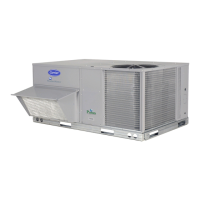
Do you have a question about the Carrier 48HC*04–14 and is the answer not in the manual?
| Brand | Carrier |
|---|---|
| Model | 48HC*04–14 |
| Category | Air Conditioner |
| Language | English |
Information on direct-drive forward-curved centrifugal blower wheel options.
Explanation of the X13 Electronically Commutated Motor and its components.
Steps for troubleshooting the X13 ECM motor using a voltmeter.
Detailed procedure for removing and replacing the ECM motor assembly.
How the SAV system adjusts fan speed for cooling, heating, and ventilation.
Steps for replacing the belt-driven motor assembly.
Recommendations for cleaning condenser coils to ensure optimal operation and longevity.
Steps for cleaning the evaporator coil, including access and material usage.
How the TXV adjusts refrigerant flow based on superheat and suction pressure.
Step-by-step procedure for removing and installing a new TXV.
Information on determining refrigerant charge amount and procedures.
How to determine and ensure correct compressor rotation direction.
Procedures for removing and replacing compressor units, noting factory-trained technicians.
Referencing troubleshooting topics for the cooling system.
Step-by-step guide to install the return air smoke detector sensor and plate.
How smoke detector signals interact with PremierLink and RTU-OPEN.
Checks sensor's ability to signal an alarm state using a test magnet.
Checks controller's ability to initiate and indicate an alarm state.
Checks controller's ability to indicate a dirty sensor test result.
Overcurrent, over-temperature, high pressure, and low pressure protection features.
Overview of the RTU-Open controller as an integrated component.
References for further RTU-OPEN installation and troubleshooting information.
Ensuring unit installation compliance and following start-up sequences.
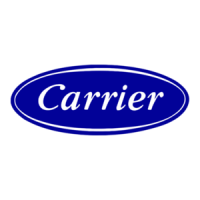

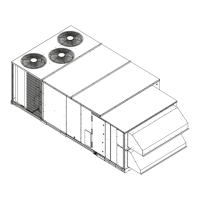
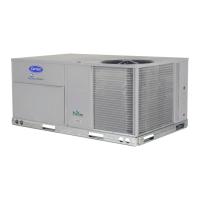
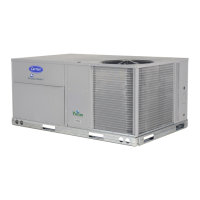
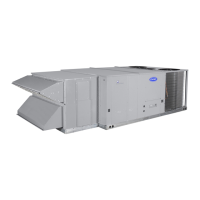
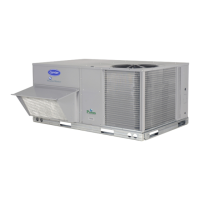





